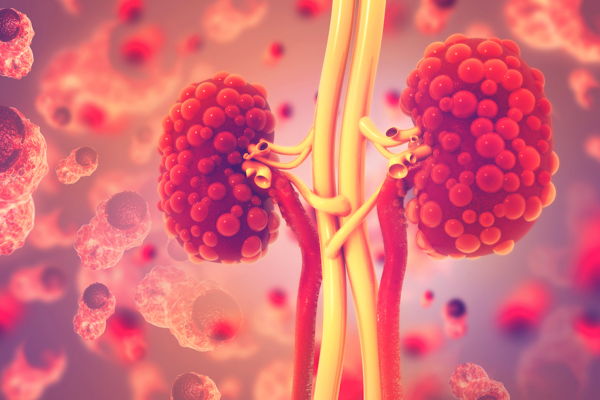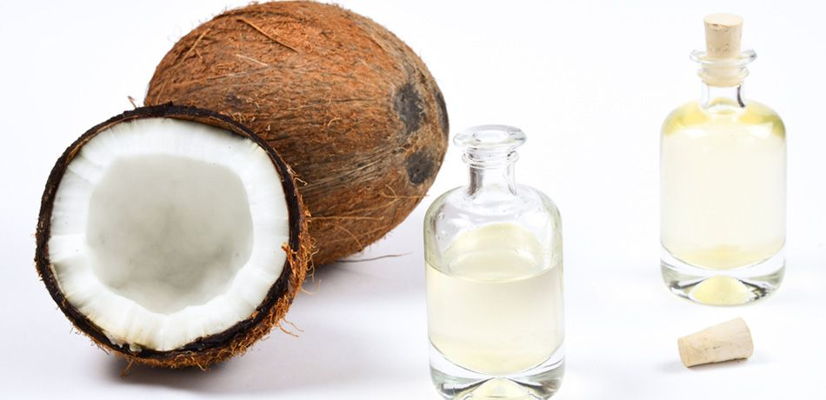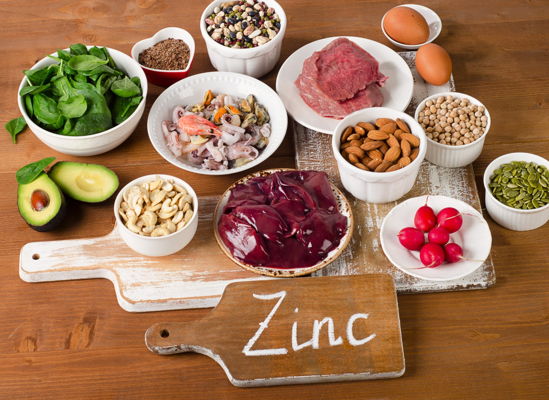10 Facts About the Healing Noni Fruit
Tuesday June 26, 2018 by Marianne Gutierrez 1,464 words
1. The History of the Noni Fruit
The latin name for Noni is Morinda Citrifolia, not to be confused with Moringa, a totally different plant altogether. Noni is a tree in the coffee family, Rubiaceae; there are over 100 names for the fruit across different regions, and the most common English names are great morinda, Indian mulberry, beach mulberry, and cheese fruit. The Noni fruit is so revered that the University of Hawaii at Manoa has an entire website dedicated to it. Hawaii is located in the topmost part of the triangle of the Polynesian Islands in the South Pacific. Another Polynesian island, Easter Island, is thought to be one of the earliest inhabited islands since about 700 BC. Therefore, the medicinal use of the Noni fruit possibly dates back to several hundred years BC, although serious use of it was first noticed in the 16th century.
hilalabdullah / shutterstock.com
2. How Were the Health Benefits Discovered?
The Polynesian people lived by relying on their spiritual leanings and understandings of nature around them, using a trial and error approach and observing local animals. They discovered that the indigenous animals loved the Noni fruit and still do today. Their understanding was passed down as laws (Kapu) and continually updated and protected by their leader the Kahuna. It has to be said, ugly, smelly, unpalatable fruit that was often used as a general tonic, in addition to its traditional place in Polynesian culture as a famine food.
Ancient Polynesians used a variety of plants for medicine, based on trial and error, with knowledge passed down orally through the generations as kapu, laws for how life ought to be lived for greatest harmony and health within the tribes. This collective knowledge was cultivated and protected by the kahuna, a spiritual leader.
ChameleonsEye / shutterstock.com
3. How Noni Moved Around the World
The Noni plant found its way to other regions including Australia and India and from there its fame spread as a natural medicine and natural dye. Studies on this fruit can seem odd, for example when mice were fed Noni they could walk without writhing on a hot plate due to Noni’s painkilling properties (therefore Noni did contain analgesic qualities). The Morinda bark produces a brownish-purplish dye that may be used for making batik, a traditional textile from the island of Java. In Hawaii, a yellowish dye can be extracted from its roots to dye cloth.
JGGRMSON / shutterstock.com
4. The Nutritional Properties
There are over 200 biochemically active compounds (phytochemicals) in the Noni plant depending on which part of the plant is used, where it is grown and the growing conditions.
The reasons why the Noni fruit is so prized are still being evaluated and studies are ongoing. However, research suggests that the benefits are that the alkaloid, xeronine, enhances enzyme and protein activity (although this requires more investigation). The polysaccharides: glucuronic acid, galactose, arabinose, rhamose, glycosides, trisaccharide fatty acid ester are all very beneficial compounds that have immune function stimulations and modulations. Polysaccharides are anti-bacterial and studies since the 1940s have demonstrated that they can reduce the growth of cancer cells. The phytochemical scopoletin offers a multitude of benefits such as regulating the hormone serotonin, which helps to reduce anxiety and depression. Scopoletin has anti-inflammatory and antimicrobial (on bacteria and fungus) actions. Other nutrients found in the noni fruit are magnesium, iron, potassium, selenium, zinc, copper, sulfur, and ascorbic acid (vitamin C).
As for the mechanism of anti-tumor, numerous studies have suggested that polysaccharides can inhibit tumor growth.
aniok / shutterstock.com
5. The Health Benefits
Although it is the fruit that is now being studied and made into a juice, it appears to be the leaves that were first used externally as poultices to reduce muscular pain, inflammation, parasites and internal maladies. More recently, a study showed the anti-cancer properties of an extract from the leaf to be more beneficial than chemotherapy for lung cancer.
The macro and micro effects of M. citrifolia (Noni) leaves on metastasized lung cancer development in vitro and in vivo were compared with the FDA-approved anti-cancer drug, Erlotinib. The extract elevated serum neutrophils and reduced the red blood cells, hemoglobin, corpuscular volume and cell hemoglobin concentration in the lung cancer-induced mammal. It suppressed inflammation and oedema, and unregulated the endogenous antioxidant responses and apoptotic genes to suppress the cancer. The 300 mg/kg extract was more effective than the 50 mg/kg Erlotinib for most of the parameters measured.
The benefits of the Noni fruit and juice are anti-cancer, anti-bacterial, anti-fungal and anti-inflammatory. These all have an affect on reducing tumors, reducing blood pressure, killing pain, and inhibiting histamine to reduce allergic reactions. Anti-inflammatory nutrients can help in conditions such as arthritis, migraines, depression and Alzheimer’s disease.
Graf Vishenka / shutterstock.com
6. The Exploitation of Noni
Noni is now a $13 (US) million dollar industry. The processes of production can be time-consuming, expensive and vary considerably which may adversely affect the nutritional benefits of the product made from the Noni fruit. The research may be biased depending on who is paying for it, due to the hoped-for income based on the research. What can’t be disputed is the popularity of this weird fruit that spread from the Polynesian islands to India, Australia, Europe and the US.
Morinda citrifolia products in the Pacific began in the mid-1990s with a Utah, US-based company, sourcing fruit juice from Tahiti. Attracted by the high prices being paid for Morinda products (particularly juice), several countries in the Pacific commenced their own commercial production and export, but overall Samoa has achieved the greatest success in terms of sustained export value and volume. Over the last decade, Noni has contributed significantly to rural incomes and the economy and has been Samoa’s major agricultural export since 2004.
Thanakrit Homsiri / shutterstock.com
7. Obesity Can Be a Problem
The once healthy Polynesians are now considered to be the most unhealthy and overweight culture in the world possibly due to abandoning the Kapu (Polynesian laws). If Noni is so highly regarded as a superfood, why are the Polynesians suffering from health issues and obesity? Could it be due to the money generated by Noni and the ability to afford a western lifestyle that is leading to disastrous health effects?
Obesity is one of the largest health crises in the world and especially so on the Polynesian islands where ironically the leaves of the Morinda Citrifolia plant have been shown to reduce obesity.
The World Health Organization states:
Replacing traditional foods with imported, processed food has contributed to the high prevalence of obesity and related health problems in the Pacific islands, Jane Parry reports. Scattered across the Pacific Ocean are thousands of islands which make up three regions known as Melanesia, Micronesia and Polynesia. Beyond the image of white sandy beaches and carefree lifestyles, the Pacific islands are facing serious health problems, the prime culprit being imported foods.
Dateline / www.sbs.com
8. Animals Love Noni
It was the native animals that drew the Polynesian islanders to adopt the Noni plant as a healing source and food, especially during times of famine. However, it is mainly the fruit the animals love and not the leaves and roots which contain toxic compounds. The islanders used the leaves externally and today science is demonstrating remarkable results in reducing tumors using an extract from the leaves.
Linkedin.com / www.pulse.com
9. Negative Side Effects of Noni
Special cases and individual concerns require caution to be exercised when consuming noni juice. Noni juice contains a high concentration of potassium which may interfere with various drugs used for curing high blood pressure such as potassium-sparing diuretics and angiotensin receptor blockers. These two can collectively result in very high levels of potassium in the body giving rise to symptoms like nausea and cardiac arrhythmia. Noni should not be taken by individuals already combating kidney problems as it may tend to aggravate the existing condition. It is strongly recommended to consult a medical professional before considering it for remedial measures especially during special conditions like pregnancy and lactation.
Syda Productions / www.shutterstock.com
10. Noni Research
The International Journal Of Noni Research edited by Dr. Kirti Singh offers more detailed information on the remarkable properties of the Noni Plant. Dr. Kirti Singh calls the Morinda Citrifolia L. a ‘Miracle Plant’.
There is an excessive amount of research to be found on the Noni fruit, its juice and its leaves, almost unprecedented. Is this due to businesses finding something and exploiting it? Or because the Noni fruit is indeed an all healing and all curing superfood?
sjk2012 / www.shutterstock.com

16 Warning Signs of Lupus to Watch Out For
1. Unexplained Fever Lupus can affect everyone differently and some may have …


21 Features of Kidney Disease
1. Dizziness Kidney Disease is when the kidneys are not filtering blood …


Top 10 Foods to Nourish Your Thyroid
Did you know that the food you eat can affect your thyroid health? Some foods …


12 Facts About Your Borderline Personality …
1. It's Finally Classified As a Mental Illness Borderline Personality Disorder, …


12 Common Factors That Trigger Rosacea …
1. Makeup Some products used on the face and body or in the mouth ie: make-up, …


22 Common Symptoms of Type II Diabetes
1. Mood Changes Mood change is sometimes one of the first symptoms to suggest …
